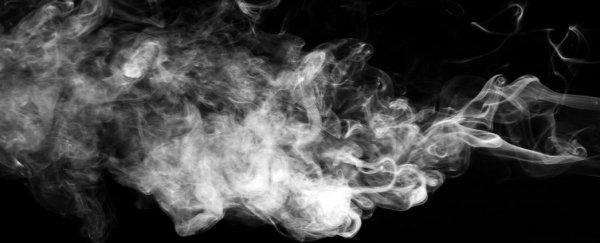A new study suggests that if you were exposed to second-hand smoke in the womb, you're 50 percent more likely to have a history of eczema, and other types of skin disorders.
Led by paediatric allergist Soo-Jong Hong from the University of Ulsan in South Korea, the researchers say we already know that second-hand smoke exposure before birth is associated with a higher risk of asthma, so with this in mind, they wanted to figure out if there was a similar link to eczema, also known as atopic dermatitis.
This is because eczema and asthma are both manifestations of an allergic hypersensitivity, or atopy, just like hay fever and food allergies. And while we still don't know the cause of eczema, it's thought that it's at least partly genetic, which suggests that a child's risk could be determined in early development.
To investigate, Hong's team analysed blood samples from 3,639 children aged seven or eight to find that those with a particular variant of the gene responsible for encoding immune proteins TNF-alpha and TLR-4 had an even higher risk of developing eczema if they were exposed to second-hand smoke in the womb, says Nathan Seppa at Science News. "Both variant forms had previously been implicated in inflammatory conditions, such as asthma and Crohn's disease (the TNF-alpha variant) and rheumatoid arthritis (the TLR-4 variant)," he adds.
The results were presented late last month at a meeting of the American Academy of Allergy, Asthma & Immunology in the US, and are similar to those of a separate, earlier finding by a team from the Karolinska Institutet in Stockholm, Sweden that also found a link between allergic diseases such as asthma, rhinitis (hay fever), and eczema and in-utero or early childhood exposure to second-hand smoke.
"Many children are exposed to tobacco smoke both in-utero and postnatally," the team wrote in the journal Pediatrics. "And up to 60 percent of mothers who quit smoking during pregnancy return to smoking within the first six months postpartum, and 80 to 90 percent relapse less than 12 months after delivery."
This team followed 4,089 patients during the first 16 years of their lives to examine how second-hand smoke exposure affected them through childhood to their mid-teenage years. They say the results suggest that in-utero exposure to second-hand smoke increased the risk of developing asthma and hay fever but not eczema. The higher risk of eczema, on the other hand, was seen when young children were exposed to second-hand smoke once out of the womb.
"Age-specific analyses suggested that the effect of second-hand smoke exposure was most pronounced for asthma up to four years of age," they conclude. "For rhinitis, the strongest associations appeared in ages one through four, whereas for eczema the excess risks were seen primarily for ages eight through 16. Our findings indicate that early second-hand smoke exposure, in-utero or during infancy, influences the development of allergic disease up to adolescence."
Is this research still in its infancy? Yep, but a picture is emerging that, somehow, one or many genetically influenced forms of allergic hypersensitivity could be linked to second-hand smoke in young and still-developing kids. It's just another reason why, surprise surprise, you really shouldn't be smoking around your young family.
Source: Science News
